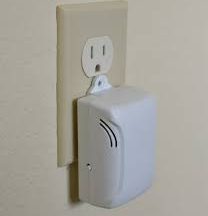 February 2020
February 2020
Sound is our constant companion. It comes from daily activities at home, those of our neighbours and beyond. High-rise buildings contend with sounds from suites, mechanical systems and the outside world. This is the reality of city life.
Thin walls allow sound to travel between suites. Poor quality windows don’t block out traffic and construction from the street. Street noises blend together to produce a hum at higher levels.
Management is aware if a building has sound problems. Owners complain. Determining if sound problems are beyond reasonable expectation can be a challenge. Sound transmission is likely unreasonable when conversation can be heard between unit walls or vents.
Buildings include measures to isolate and reduce sound and vibration. Building codes require the use of construction materials that satisfy acoustical lab tests. Builders test the performance of building components such as insulation and walls as a building is built. Standards change over time so older buildings may not have been subject to the same standards as newer buildings. Newer buildings which may have thinner walls, more windows and different construction methods may be more sensitive to sound migration.
It is unrealistic to expect complete silence in a suite. Blocking out all external sound in most buildings is just not possible.
High-rise buildings are concrete slabs which transmit noise. Buildings along subway lines may have been built with rubber sound buffers in basement areas and along walls. Sound control material below a hardwood or laminate floor minimizes but does not eliminate sound transmission through concrete. Thicker subfloors, dropped ceilings and acoustic tiles are partial solutions.
Sources of noise include impact, mechanical, and external or environmental. Each transmits in different ways. Acoustic consultants can be employed to run testing sessions which range in price from $2,500 to $5,000. Their specialized equipment can measure the level of sound, help identify its source and determine if noise is beyond a “reasonable” level.
Soundproofing for an entire building is an unreasonable expectation. Sound isolation is the best solution since sound cannot be avoided.
When trying to identify noise in a suite …
- Visit at different times of the day. Day activities causing noise likely differ from evening activities when more residents are at home.
- Sound from heating systems may be heard in suites if ducts are not adequately sealed.
- Rooftop mechanical systems including chillers may cause vibrations that reverberate through an entire building.
- Consider nearby buildings with rooftop mechanical rooms that may be the source of noise.
- Compare sound levels when windows or balcony doors are open and closed.







